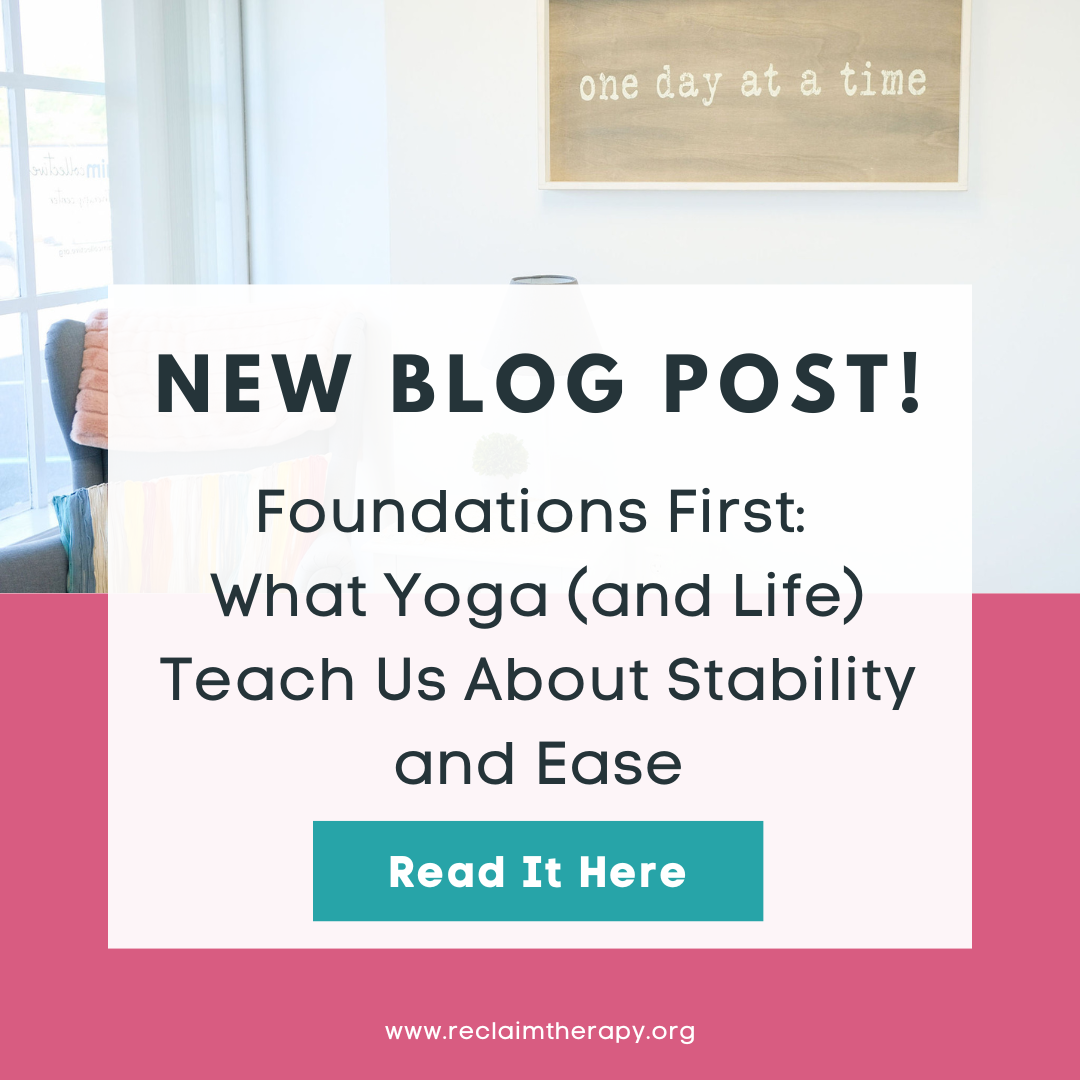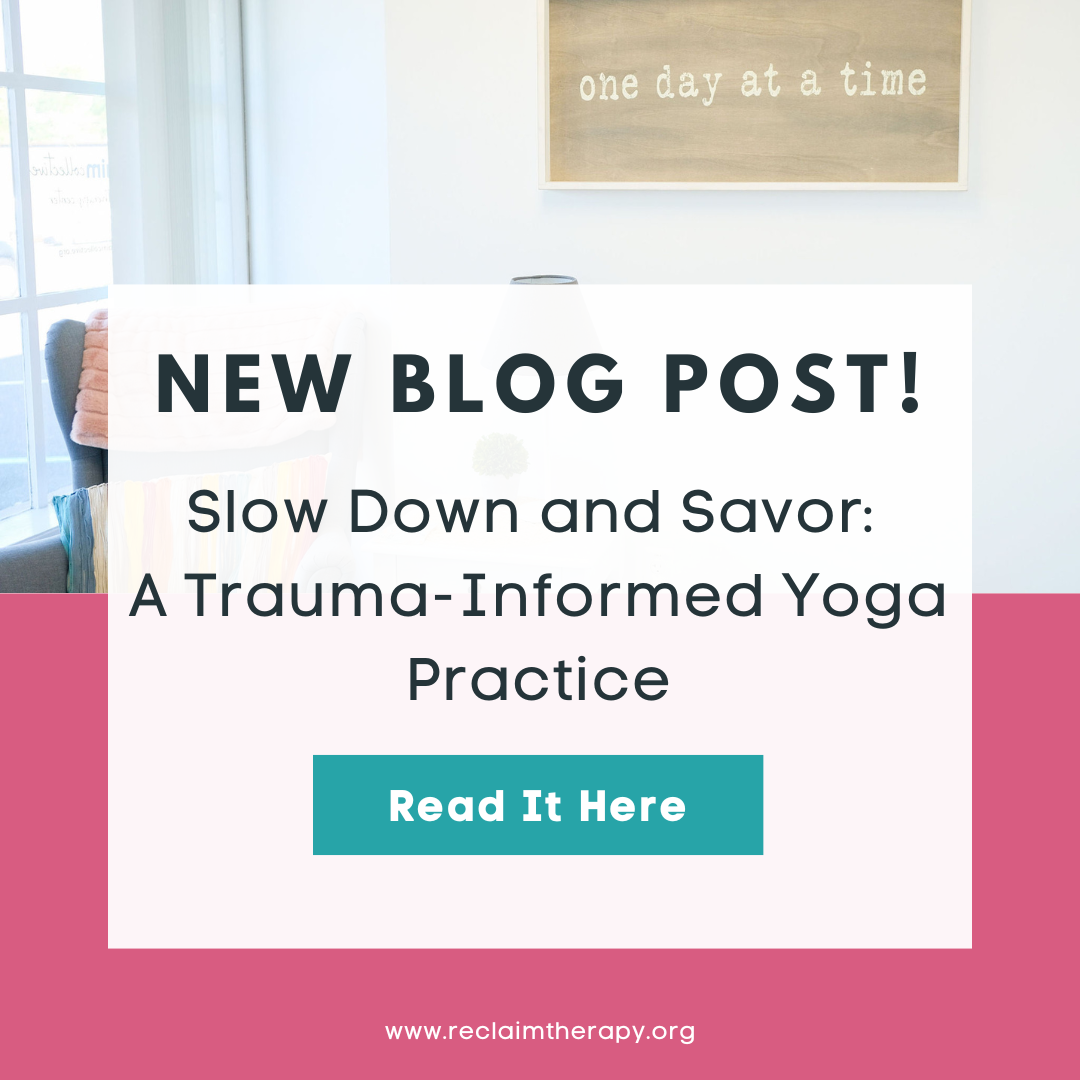Pendulation in Yoga for Nervous System Healing
I was on a walk the other day, caught in that familiar spiral of obsessive thinking.
You know the one: replaying conversations, analyzing decisions, mentally rehearsing things that haven't even happened yet. My body was moving through the autumn leaves, but my mind was somewhere else entirely.
And then I noticed. Just that simple act of awareness: "Oh, I'm obsessing again."
That noticing created a tiny pause, just enough space to shift my attention to the changing colors all around me. Reds and oranges and that specific shade of yellow that only happens in October.
A deeper breath came in. My shoulders dropped half an inch.
Of course, the mental chatter returned about thirty seconds later. Because that's what minds do. But here's the thing: because I'd just practiced shifting my attention once, I could do it again. Back to the leaves. Back to the breath. Back to the present moment.
I was practicing something called pendulation, and I didn't even mean to.
If you've ever been in one of our yoga therapy classes here in Pennsylvania, you've probably experienced this technique without knowing its name.
And once you understand how it works, you'll start noticing opportunities to practice it everywhere.
What Is Pendulation? A Somatic Therapy Technique for Yoga and Life
In somatic therapy, pendulation is the practice of moving your attention back and forth between discomfort and a resource (something that feels supportive or grounding). Instead of diving headfirst into intense emotions or avoiding them completely, you learn to touch the edge of discomfort and then return to safety.
Think of it like dipping your toe in cold water instead of jumping in all at once.
You feel the temperature, you pull back, you breathe, and then maybe you try again. Over time, your nervous system learns that it can handle the discomfort without getting completely overwhelmed.
This is trauma informed yoga in action. We're not pushing through pain or forcing ourselves to "get over it." We're building capacity slowly, respecting what your body can handle right now while gently expanding your window of tolerance.
The long-term promise of pendulation?
More space for breath.
More room for life.
A nervous system that doesn't have to choose between constant vigilance and complete shutdown.
What Pendulation Is NOT: Setting the Record Straight
Before we go further, let's clear up some common misconceptions about this nervous system regulation technique.
Pendulation is NOT pushing through pain. If there's actual pain, sharp sensation, or something that feels dangerous, we back off. Full stop. Discomfort is different from pain. Discomfort might be that burn in your thighs during a lunge, or the vulnerability of opening your chest in a backbend. Pain is your body's alarm system saying "stop now."
Pendulation is NOT toughing it out. We're not diving into the heart of your hardest emotions and white-knuckling your way through. That's not healing. That's retraumatization with a yoga mat.
Pendulation is NOT forever avoiding discomfort. Yes, sometimes we need to stay in our comfort zone. Sometimes the kindest thing is to rest in child's pose for the entire class. But growth happens at the edge, and pendulation gives us a way to visit that edge without setting up permanent residence there.
Pendulation does NOT have to be solo work. In fact, if discomfort feels too big to touch on your own, working with a somatic therapist or joining a trauma sensitive yoga class can be essential. Sometimes the most important practice is resourcing yourself and staying with that resource. No pressure to venture back into the hard stuff until you're ready.
How Pendulation Shows Up in Yoga Practice
Here's where this gets practical.
When we talk about the meaning of pendulation, it isn't just therapy-speak. It's something that happens naturally in yoga for anxiety and stress, especially when the practice is designed with nervous system healing in mind.
Picture this: You're in a lunge. Maybe it's a low lunge with your back knee down, hands framed around your front foot. You've been here for a few breaths already, and your front thigh is starting to burn. Your hip flexor on the back leg is stretching in a way that feels intense.
This is the discomfort. Not pain, but definitely challenging.
In a typical yoga class, you might hear "push through it" or "find your edge and breathe." But in trauma informed yoga techniques, we do something different. We pendulate.
You feel the discomfort. You notice the burn, the stretch, the intensity. You're not ignoring it or pretending it's not there.
Then you find your resource. Maybe it's the feeling of the ground solid beneath your feet. Maybe it's the music playing in the background. Maybe it's the rhythm of your breath moving in and out. Maybe it's noticing how neutral and calm your jaw feels, even while your legs are working hard.
You stay with that resource for a moment. Let your attention rest there. Let your nervous system register: "Oh, even in this challenging moment, there's something stable. Something safe."
Then you return to the sensation in the lunge. Not to fight it or fix it, but just to be with it for another breath or two.
And back to the resource.
This is pendulation yoga practice. This oscillation between challenge and support teaches your nervous system something crucial: you can handle hard things without getting flooded. You can stay present with discomfort without abandoning yourself.
Grounding Yoga Techniques: Finding Your Resources
The beautiful thing about yoga for nervous system regulation is that resources are everywhere once you start looking. Here are some of the most accessible ones:
Sensory grounding in your environment: The temperature of the room against your skin. The color of someone's yoga mat nearby. The sound of the teacher's voice or the music playing. The texture of your mat under your palms. These sensory details anchor you in the present moment, which is where regulation happens.
Your breath (with an important caveat): For some people, focusing on the breath is incredibly resourcing. For others, especially those with a history of panic attacks or respiratory trauma, breath awareness can be activating rather than calming. If breath isn't your friend right now, that's completely okay. Choose a different anchor.
If breath does work for you, notice the sensation of air moving through your nose. The gentle rise and fall of your belly. The pause between inhale and exhale. You're not trying to change anything, just observing what's already happening.
Neutral body sensations: When there's intensity in one part of your body (hello, burning quads in chair pose), you can often find neutral zones elsewhere. Your earlobe probably feels pretty calm right now. Your pinky finger isn't holding much tension. It sounds almost silly, but noticing these neutral spaces can be profoundly grounding.
This is one of my favorite somatic yoga therapy techniques because it reminds us that even when part of our experience is uncomfortable, the whole of our experience contains ease too.
Imagery and visualization: In individual therapy sessions, we sometimes get creative with resourcing through guided imagery. You might visualize a place where you feel safe, real or imagined. A person whose presence feels nurturing. A memory of a time when you felt held and supported.
These kinds of resources can be powerful, but they're also more complex. If you're curious about working with imagery, I'd recommend exploring this with a trusted somatic therapist in Pennsylvania who can help you develop resources that are truly supportive for your system.
Pendulation Off the Mat: Yoga for Emotional Regulation in Daily Life
Just like we experience physical discomfort in yoga poses, we experience emotional discomfort in life. Yoga can bring us a pendulation somatic experiencing similar to those used in traditional therapy. The same technique applies.
You're in a difficult conversation and your chest starts to tighten. That's discomfort arising. Can you notice it without getting swept away by it? Can you feel your feet on the floor for a moment? Can you take one conscious breath before responding?
You're scrolling social media and feel that familiar anxiety creeping in. There's the discomfort. What's your resource? Maybe it's putting the phone down and feeling the weight of your body in the chair. Maybe it's noticing three things you can see in the room. Maybe it's placing your hand on your heart and feeling the warmth there.
You're lying in bed at 2am with racing thoughts about tomorrow's presentation. Discomfort, meet resource. The cool pillow against your cheek. The weight of the blanket on your body. The sound of your partner breathing next to you.
This is the yoga of life. Not the Instagram version with perfect poses and motivational quotes. The real, messy, beautiful practice of staying present with what is while also remembering you have options, you have resources, you have the capacity to move between hard and soft.
Practice Pendulation with Our Yoga Therapy in Pennsylvania
If you've read this far, I'm genuinely grateful. These concepts can feel abstract until you experience them in your body, which is why I want to invite you to practice with us.
Our trauma informed yoga classes here at Reclaim Therapy are designed specifically with nervous system regulation in mind. We're not here to make you into a pretzel or teach you the fanciest poses. We're here to help you build a sustainable relationship with your body, your breath, and your capacity to be with whatever arises.
Whether you join us for a live 60-minute class or try one of our recorded sessions, you'll experience what pendulation actually feels like in practice.
How it shows up in the transitions between poses.
How it informs the way we cue modifications and rest.
How it creates space for you to discover your own rhythm of challenge and ease.
Ready to experience pendulation for yourself?
Abby Albright offers trauma informed yoga classes near me in Horsham, PA
Join our next yoga class, explore our recorded sessions, or reach out to learn more about our somatic therapy offerings in Horsham and Montgomery County. Because healing doesn't have to mean pushing through. Sometimes it means learning to move between the hard and the soft, building capacity one breath at a time.
Your nervous system has been working so hard to keep you safe.
Maybe it's time to teach it something new: that you can touch discomfort without drowning in it, and that resources are always available when you need them.
I hope to see you in a class soon!
🧡,
Want to learn more about our trauma informed yoga classes in Horsham, PA?
Reclaim Therapy is a trauma therapy practice in Horsham, PA that offers therapeutic yoga, both online classes and in our Horsham, PA offices. We’d love for you to join our free classes, or our paid offerings!












